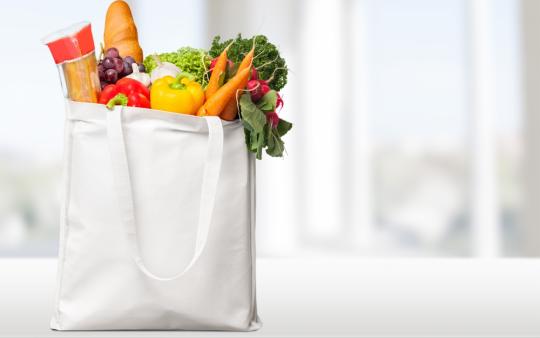I had a hard time believing the statistic that the average family wastes $1600 of food a year. And then I started paying attention to our own compost bin habits and began to understand. I could blame my toddler, who throws every other spoonful on the floor just for kicks...or my kindergartener, who will swear up and down she wasn't given enough time for lunch. But pushing blame aside, food waste is a serious problem that not only tosses money out with the compost, but squanders all the resources, time, and money that went into producing, shipping, and storing the food in the first place. Let's take a look at how you can tackle food waste in your home, even when kids have a talent for it.
Meal plan
This has the most opportunity for reducing food waste. Take the time to plan your week or even a whole month and build your shopping list based on that plan. You can use tools as simple as an Excel spreadsheet (here's mine) or as full-service as an online app such as the meal planning system by Toronto-based Meal Garden, or the recipe manager and grocery list creator Paprika.
Know your fridge
Take stock of what's in your fridge before you hit the grocery store so you're not over-buying. Also, checking the back and bottom of the fridge every week is a great way to see what food needs to be used up so you can build your meal plan accordingly. Use your phone to take some photos of the inside (crispers too!) before you head out to make it easier!
Best Before dates: use your judgment
You'd think the "Best Before" or "Use By" dates on packages would be your go-to when trying to figure out whether a forgotten jar of food in the back of your fridge had gone bad. Unfortunately, it turns out they don't mean all that much. In most cases, you're better off using your judgement and common sense (Does it look, smell, or taste bad? Has it even been opened yet?). There are some handy guides to help you determine how long you can safely consume a product after opening, including a searchable database at EatByDate.
Self-serve
Allowing everyone to choose what and how much food they put on their plate is one of picky-eater expert Danielle Binns' tips for parents struggling at mealtimes. By allowing your kids to choose what and how much they want to eat from what you're offering, you're less likely to have food waste than if you pile heaps of everything on their plate before they sit down. Don't worry--they won't go hungry!
Easy recipes and freezer friends
Even the most organized fridge or meal plan can fall to pieces with illness or other unplanned schedule and priority shifts in a busy household. But you don't have to let your food spoil. There are lots of great easy meals that can be cobbled together in no time with staples or veggies that aren't as fresh as they were a week ago. Before you reach for the phone to order take-out, consider making a quick frittata, stir fry, fried rice, or pasta bake. If you know you're not going to get to use up some produce, use your freezer to keep it for later. Soup is made for these times!
Try being conscious about the food you're throwing in the compost for one week. Are you surprised? How can you make improvements next week? The changes often don't have to be big - but the savings and environmental impact can be.
*Originally published July 26, 2016






